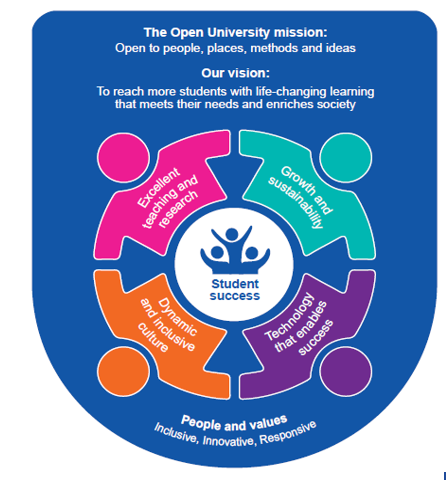eSTEeM
Centre for Scholarship and Innovation
You are here
- Home
- eSTEeM Projects
- Other
- Using peer observation within a Mathematics and Statistics community of practice in Scotland
Using peer observation within a Mathematics and Statistics community of practice in Scotland
- Project leader(s): Sally Crighton
- Theme: Other
- Faculty: STEM
- Status: Archived
- Dates: May 2017 to September 2019
This project stemmed from the first named author’s continuing interest in developing scholarship in a community of Open University (OU) Associate Lecturers (ALs) living in Scotland and teaching Mathematics & Statistics (M&S) modules.
 The strategic objective of “fostering a dynamic and inclusive culture” (The Open University, 2019a) notes the need to create conditions for all staff to thrive and be motivated. “Fostering a dynamic and inclusive culture … by investing in staff to recognise and maximise their contribution to success”, (The Open University, 2019). The ‘paired-peer observation scheme’ and supporting face-to-face professional development meetings, detailed below, is one example of senior management staff in the M&S School, module team members and ALs working together to establish an academic community and collegiate culture. This is likely to become increasingly important as ALs become fuller members of what the university has referred to as “sustainable academic communities”.
The strategic objective of “fostering a dynamic and inclusive culture” (The Open University, 2019a) notes the need to create conditions for all staff to thrive and be motivated. “Fostering a dynamic and inclusive culture … by investing in staff to recognise and maximise their contribution to success”, (The Open University, 2019). The ‘paired-peer observation scheme’ and supporting face-to-face professional development meetings, detailed below, is one example of senior management staff in the M&S School, module team members and ALs working together to establish an academic community and collegiate culture. This is likely to become increasingly important as ALs become fuller members of what the university has referred to as “sustainable academic communities”.
The first named author’s role as module chair in M&S and Nation Staff Tutor in the STEM faculty meant that development work in this community in Scotland was guided by strategic priorities of the School, Faculty and Nation.
One of the themes emerging from evaluation of subject-specific face-to-face professional development events in Scotland was that ALs were surprisingly lacking in confidence in front of their peers. Another theme was that M&S ALs initially felt uncomfortable about engaging with reflective writing and scholarship, even though as a group of university teachers their practice is indeed reflective and based on sound pedagogical ideas.
The theme of lack of motivation to prioritise engagement with reflective writing and scholarship, expressed by some M&S tutors, is noted widely in the literature, for example in Gardner, A., & Willey, K. (2016). There is a strong driving force in the UK (and beyond) for university teachers to become accredited by the Higher Education Academy (HEA). https://www.heacademy.ac.uk/. This provides university teachers with recognition of their practice, impact and leadership of teaching and learning within the UK Professional Standards Framework and demonstrates a commitment to improving quality of teaching to enhance the learning experience of students. It is, therefore, very important to encourage and develop ALs to work towards achieving HEA recognition, being mindful that this might require them to acquire different skills. In the OU, ALs can apply for HEA membership through our professional development scheme, Applaud, (The Open University, 2019b) and also directly to HEA.
In order to explore both of these concerns, a ‘peer observation’ scheme was introduced in this community. Peer observation among tutors does not happen routinely in the OU, though various approaches have been taken within the wider AL community in Scotland (Harper & Nicolson, 2013). The approach to peer observation, described below, aims to address some general criticisms (Hughes et al, 2007) and some concerns commonly associated with unpopularity of implementation of peer observation initiatives across institutions (Purvis et al, 2009), though there are successes (Nash et al, 2014). The fundamental tenet of the opt-in paired-peer observation scheme was that observations should focus on being easily achievable in a tutor’s busy schedule, with the customary essential ingredients of humour and humility (Schein, 2013). Feedback from the first round of observations confirmed that that peer observation, focusing on sharing of positive feedback between ALs, can contribute towards the fostering of a dynamic, mutually supportive community as a means of improving AL confidence and producing practical examples of good practice. The conclusion was that the paired-peer observation scheme worked well, as part of on-going professional development opportunities being explored in continuing scholarship by the first named author.